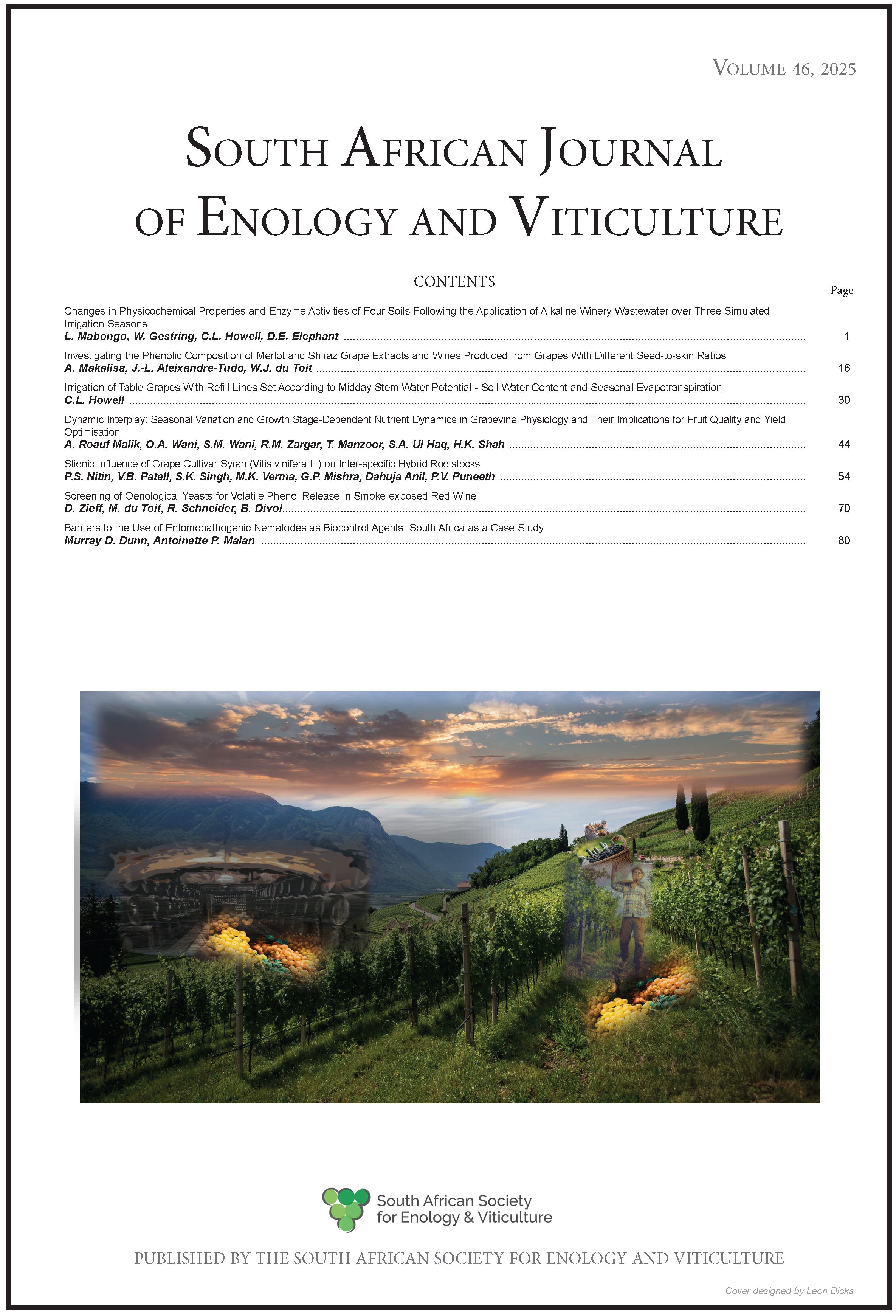Screening of Oenological Yeasts for Volatile Phenol Release in Smoke-exposed Red Wine
DOI:
https://doi.org/10.21548/46-6965Abstract
The frequency of wildfires has increased over the past few years, particularly in winemaking countries. This is partly because of climate change, thereby elevating the risk of producing smoke-tainted wines. The off-flavours associated with smoke taint originate from volatile phenols, which are progressively liberated from their glycosylated precursors during the winemaking process. Current strategies to prevent and/or mitigate the negative impact of smoke taint in wine production are not fully effective because it is difficult to remove glycosylated volatile phenols without affecting wine quality. One ill-explored avenue could be to use wine yeasts with extracellular glycosidase activities in combination with other downstream remediation processes. For this study, grape juice was obtained from smoke-exposed Pinotage grapes. Thirty yeast strains were screened for their potential to release volatile phenols. Partial fermentations were conducted on laboratory scale for 96 h, after which volatile phenols were quantified using GC-MS. A large variation was observed between yeast strains in their ability to liberate volatile phenols, particularly guaiacol, which serves as a key indicator of smoke taint in wine. Most strains released guaiacol at levels above its detection threshold in wine (23 μg/L). Nevertheless, Lachancea thermotolerans IWBT Y940, Starmerella bacillaris IWBT Y550 and Wickerhamomyces anomalus IWBT Y541 displayed the highest total volatile phenol release in smoked Pinotage, close to that observed with a commercial glycosylase formulation.
Downloads
Downloads
Published
Issue
Section
License
Copyright (c) 2025 South African Journal of Enology and Viticulture

This work is licensed under a Creative Commons Attribution-NonCommercial-NoDerivatives 4.0 International License.
A copyright form will be e-mailed to the corresponding author when the manuscript has been accepted for publication.
In principle, the Author agrees to the following when he/she signes the copyright agreement:
I hereby assign to the SOUTH AFRICAN SOCIETY FOR ENOLOGY AND VITICULTURE (SASEV) the copyright of the text, tables, figures, supplementary material, illustrations and other information (the Material) submitted with the manuscript to be published in SOUTH AFRICAN JOURNAL OF ENOLOGY AND VITICULTURE (SAJEV) (the "Article"). The copyright becomes effective from the date the Article has been accepted for publication in SAJEV.
This is an open access journal, and the authors and journal should be properly acknowledged, when works are cited.
Author's may use the publishers version for teaching purposes, in books, theses, dissertations, conferences and conference papers.
A copy of the authors' publishers version may also be hosted on the following websites:
- Non-commercial personal webpage or blog.
- Institutional webpage.
- Authors Institutional Repository.
The following notice should accompany such a posting on the website: This is an electronic version of an article published in SAJEV, Volume XXX, number XXX, pages XXX - XXX, DOI. Authors should also supply a hyperlink to the original paper or indicate where the original paper (www.journals.ac.za/index.php/sajev/) may be found.
Authors publishers version, affiliated with the Stellenbosch University will be automatically deposited in the University's Institutional Repository SUNScholar.
Articles as a whole, may not be re-published with another journal.
The following license applies:
Attribution CC BY-NC-ND 4.0

